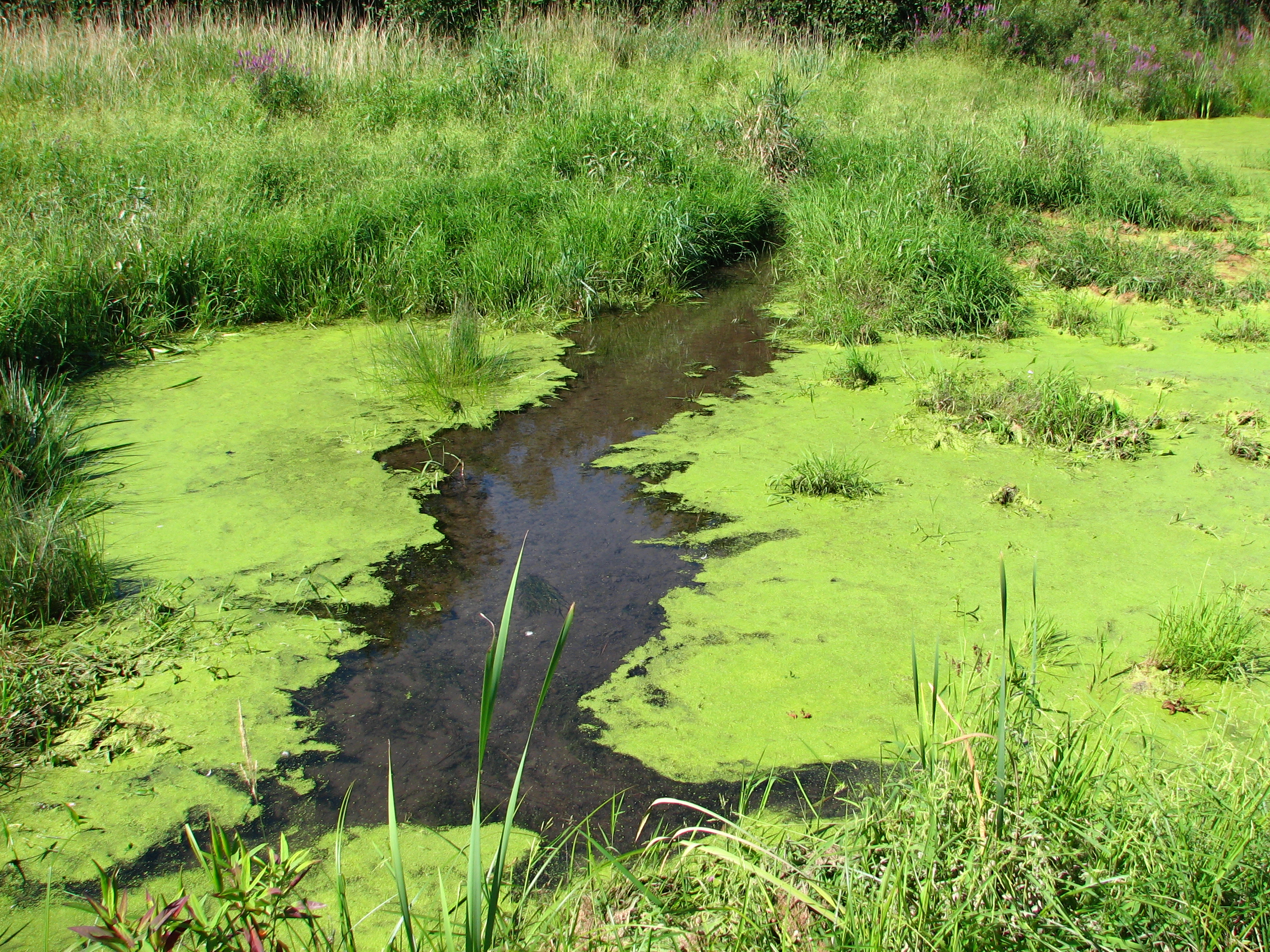Exposure Reporting
To report a harmful algal bloom exposure please click on the respective link below.
- Click here to report an Animal Algae-Related Illness.
- Click here to report a Human Algae-Related Illness.
Who to Call?

What is a Harmful Algal Bloom (HAB)?
Kansas water bodies are known to have algal blooms. Blue-green algae are a common type of bacteria that grow in water. When certain conditions are present, such as high nutrient and light levels, these organisms can reproduce rapidly creating an algal bloom. Some of these blooms are harmless, but when the blooming organisms contain toxins, other noxious chemicals, pathogens, or impact recreation and economic activities, it is known as a harmful algal bloom. The Kansas Public Health Tracking (Tracking) program investigates voluntary reports of persons or animals who have fallen ill shortly after visiting a lake where a harmful algal bloom may have occurred.

Harmful Algal Blooms and the Environment
Some blue-green algae produce toxins that could pose a health risk to people and animals when they are exposed to them in large enough quantities. Not all blue-green algae are harmful. People and animals can become sick when surface scums or water containing high levels of blue-green algal toxins are swallowed, or come in contact with the skin, or when airborne droplets containing toxins are inhaled while swimming, boating, and skiing. The most commonly reported symptoms are allergy-type reactions, intestinal and respiratory problems and skin irritations. Harmful Algae Blooms (HABs) can appear (or disappear) rapidly. HABs can affect the water's appearance differently. The water may have a green or brown color, or may have scum on the surface, or may have a paint-like appearance.
Harmful Algal Blooms and Health
Who is at risk?
People and animals are at risk from HABs. The biggest risk to health comes from ingesting the toxins and full body contact with toxins during recreational activities such as swimming, skiing, or jet skiing, or from inhaling spray cast up from the water’s surface by recreational activities or by the wind. HABs can also cause dermatological symptoms with prolonged skin contact with water or wet clothes. Children and pets are most at risk while engaging in recreation in the water because they are more likely to accidentally or intentionally swallow lake water. Pets can become ill after coming in contact with algae, or even from eating dried algae along the shore or from licking algae off their fur. To prevent getting sick from HABs, avoid contact with the water when a bloom may be present.
No antidote exists for any known algal toxin. This makes prevention the best option for protecting humans and animals from the dangers of HABs. While there are a number of chemicals marketed to control algae (i.e. algicides, the most common of which is copper sulphate), using these while a bloom is in progress is a poor choice. Once a blue-green algae bloom is present, killing it will cause toxins to be released in the water. While the water may look clearer for recreation purposes, toxins may still be present in high amounts. Also, use of an algicide is a temporary and symptomatic treatment of the problem as the blooms will likely return in a short amount of time (days to a couple weeks). The best approach for reducing or eliminating blue-green blooms in a lake is to make sure the excessive amount of nutrients (phosphorus and nitrogen) is prevented from entering the water through runoffs.
Tracking Harmful Algal Blooms
KDHE leads a Harmful Algal Bloom (HAB) response group that is comprised of internal partners such as the following bureaus, Epidemiology and Public Health Informatics (BEPHI), Environmental Field Services (BEFS), Water (BOW), and the Kansas Environmental Health Laboratories (KHEL), the Office of Public Information, and external partners including the Army Corps of Engineers, the department of Wildlife, Parks and Tourism and local lake managers. KDHE coordinates the public lake water sampling and analysis and when necessary issues appropriate public health advisories. Lakes sampled for HAB based on the online complaint form include reservoirs, community lakes, state fishing lakes and/or are waters managed or owned by federal, state, county or municipal authorities. Public health advisories are based on cell counts and concentration of microcystin.
Harmful Algal Bloom Data
The Tracking program collects and analyzes data on HAB-related human and animal illnesses or deaths voluntarily reported to the KDHE and from calls to the Kansas Poison Control Center. Data from the water sampling activities are used to validate each reported case. The goal of this epidemiological surveillance activity is to learn from the data and use this information to educate the public and inform decision making at stakeholder organizations. For that reason, the Tracking program strongly encourages the public to report suspected human and animal illnesses and deaths through the KDHE website or via telephone at 855-422-5253.
Harmful Algal Bloom Report
Resources